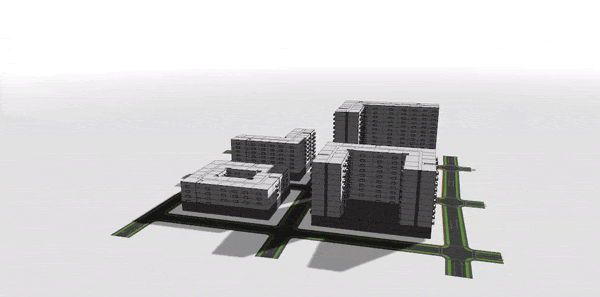Video and hero image courtesy the Media Lab’s Mediated Matter Group
An interdisciplinary group led by MIT Media Lab associate professor and Mediated Matter research group director Neri Oxman has developed a new method of printing 3D objects with living biological organisms, such as bacteria, to produce hybrid living materials. These HLMs could be used to create biomedical tools, such as braces customized with living cells that then produce painkillers or topical treatments, the researchers tell MIT News. During their proof-of-concept experiments, the team printed objects that precisely incorporated chemicals that would activate a response in biologically engineered microbes. A layer of these living microbes were then spray-coated onto the printed object and displayed specific colors or fluorescence in areas treated with the integrated, 3D printed chemicals. The printing platform can also produce objects with user-specified variability in material properties, such as stiffness and absorption. For this study, Oxman's team included graduate students Rachel Soo Hoo Smith, Christoph Bader, and Sunanda Sharma; Dominik Kolb, Tzu-Chieh Tang, Christopher Voigt, and Felix Moser at MIT; Ahmed Hosny at the Dana-Farber Cancer Institute of Harvard Medical School; and James Weaver at Harvard's Wyss Institute. [MIT News]
What does ARCHITECT's editor-in-chief Ned Cramer think about the draft executive order mandating a uniform style for federal architecture? Not good things. [ARCHITECT]

Scientists at Lawrence Livermore National Laboratory have identified a way for California, the most populous U.S. state, to achieve its self-imposed requirement of carbon neutrality by 2045. The study "Getting to Neutral: Options for Negative Carbon Emissions in California" pinpoints three mechanisms: "the uptake of carbon in its natural and working lands, converting waste biomass into fuels, and removing CO2 directly from the atmosphere with purpose-built machines." "Without CO2 removal, reaching our carbon neutrality goal will be slower, more difficult and costly,” said LLNL chemist and lead author Sarah Baker. “While there are no silver bullets, we have evaluated strategies that rely on many existing technologies and resources, creating a CO2 removal blueprint that can be replicated.” [LLNL]
In the mostly unexplored marketplace of five-axis polymer printing devices, Polish manufacturer VShaper has announced its 5AX five-axis hybrid 3D printer will be commercially released in late May. One downfall of conventional 3D printed objects is weakness in the vertical, z-axis because the stacked layers of outputted filament simply melt together; in the horizontal, x-y plane, the filament is chemically bonded. VShaper first debuted a prototype of 5AX in 2017. [3DPrint.com]

TestFit CEO Clifton Harness doesn't think algorithms will replace architects soon, but he does think "the counting of parking spaces absolutely should be automated." With $2 million in new seed funding, the Dallas startup offers generative design software that runs test fits of unit mixes in multifamily residential projects and neighborhoods in seconds, with the goal of saving architects from dead-end projects. [ARCHITECT]
For its new CEO pick, WeWork went with expertise in real estate over tech, naming Sandeep Mathrani to the challenging role of salvaging the embattled co-working company. Mathrani, most recently the CEO of Brookfield Property Partners' retail group, will relocate from Miami to New York for the position. WeWork's interim co-CEOs Artie Minson and Sebastian Gunningham will stay on during the transition. [The Wall Street Journal]


Have you recently launched an innovative lighting product, technology, or software? Submit it into ARCHITECTURAL LIGHTING'S 2020 AL + AR Product Call for editorial consideration. Select entries will be published online and in ARCHITECT's April issue, which will be distributed at LightFair 2020. [ARCHITECTURAL LIGHTING]
Have you recently launched a new product or collection for the building and design market? Want to reach thousands of architects, designers, and industry professionals? Exhibiting at the 2020 AIA Conference on Architecture? If your answer is yes to any of these questions, submit your products to ARCHITECT's Spring 2020 Product Call for editorial consideration for our May print issue. [ARCHITECT]
















